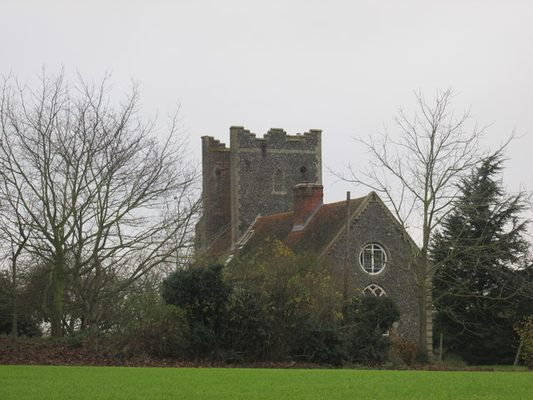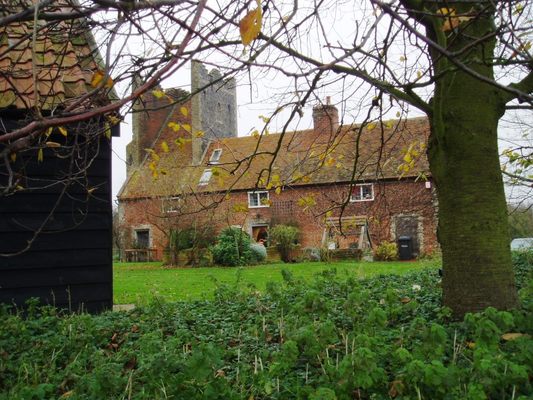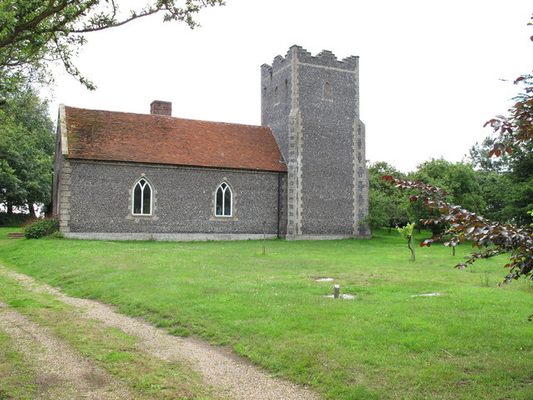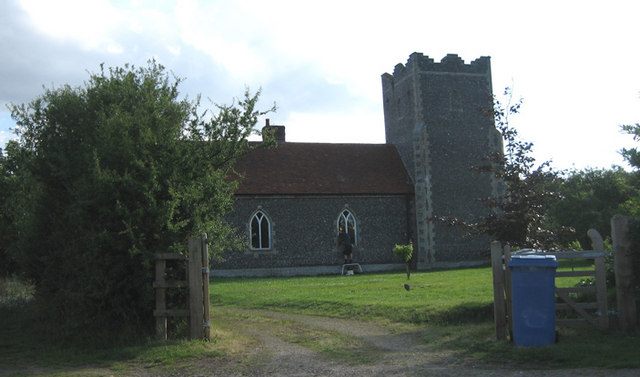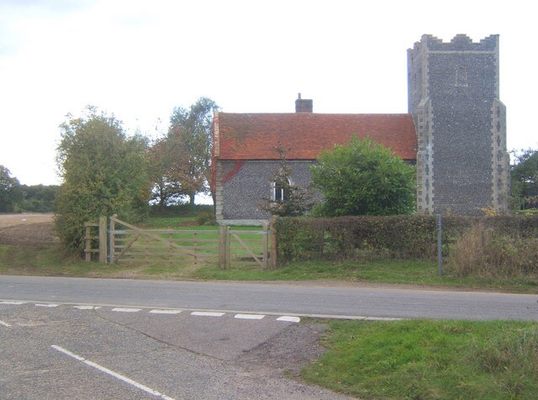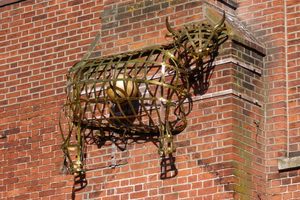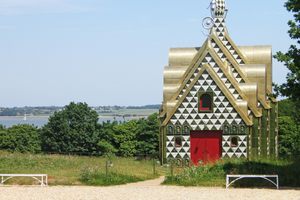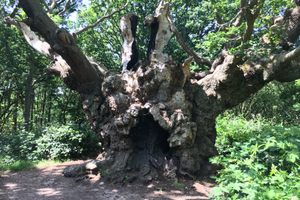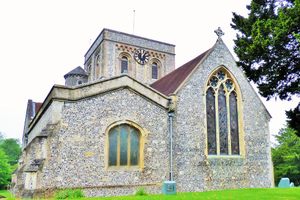About
The Tattingstone Wonder was originally two quaint cottages. They weren't much of a wonder—in fact, Thomas White (Edward White in some accounts), the owner of the Tattingstone Place estate, viewed them as an eyesore.
By 1790, White grew so tired of the cottages he decided to take action. He added a third cottage and topped the row of homes with a fake tower, making the buildings resemble the nave and steeple of a church. He completed this look by replacing the cottage fronts with a flint facade, including two gothic windows. The south face of the "church" was not visible from his estate, however, thus such a facade was omitted here.
Although now largely forgotten by many people, the building's fame was once so great that in 1937, a poster of it was featured in Shell Petroleum’s "Visit Britain’s Landmarks” advertising campaign. The artist who beautifully recreated the Tattingstone Wonder in this campaign, Walter Stegglee, chose to focus on the rear, exposing the unmasked cottages from behind, revealing the magic of the building and demonstrating its architectural journey.
Related Tags
Published
January 8, 2020
Sources
- https://britishlistedbuildings.co.uk/101033392-the-tattingstone-wonder-tattingstone#.VWCN8VKfa3I
- https://www.tattingstoneparishcouncil.co.uk/tattingstone-wonder
- https://thefollyflaneuse.com/the-tattingstone-wonder-tattingstone-suffolk/
- Fosters English Oddities - A. Foster, 2013, ISBN 978-0-7198-0696-4
